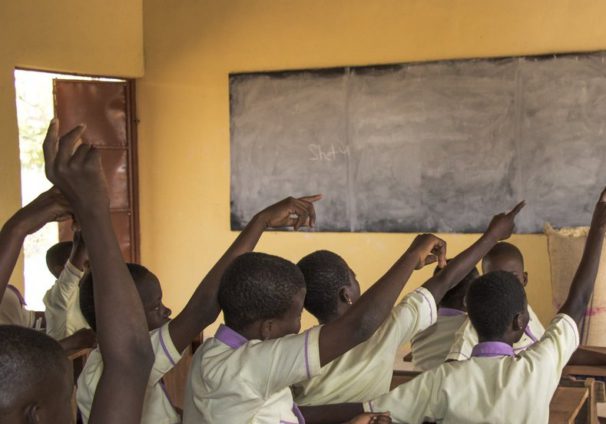Conducive classroom climate
In Ghana, it is common to hear some parents claim in the Akan dialect “Me ba no anya school”, meaning my child has gained admission to school.
Often, such parents are clueless about the serenity of the school’s classrooms.
Their only concern may be school fees and the learner’s instructional support. Others are keen on the classroom climate, such that it is considered when selecting a school to enrol their children.
A conducive classroom climate looks well ventilated, tidied and inclusive, appropriate teacher-learner ratio, robust infrastructure, has adequate learning resources and a healthy bond between peers and teachers, coupled with rules of engagement, instructional clarity and a good sense of humour.Best online courses
Create a free binance account
The depth of learner engagement, good behaviour and improved learning outcomes largely depend on it.
To date, anytime as former peers, we share conversations on the WhatsApp group page, it brings memories of our days in the classroom. I reminisce about the unity among us to the extent that we never experienced bullying from peers or teachers.
Our desire to see each other excel academically was top-notch, as there was regular peer-to-peer instruction. The bond we shared with some teachers made us regular and punctual to school and class because they were welcoming and friendly.
Their sense of humour sent some of us under the desk laughing uncontrollably, complemented by tears flowing down our cheeks.
Best online courses
The notorious ‘names of talkative’ initiative to curb noisemaking and maintain discipline kept even the stubborn ones engaged and of good behaviour because finding your name in that list obviously meant trouble.
These practices were but a few that enhanced the sense of belonging, discipline and learner engagement in class activities, enabling a conducive class climate.
Instructional strategy
Teacher-learner bond is a key teaching strategy that fosters a conducive classroom climate. Ryan (2013) noted that how a teacher organises their class, or how they control it, will yield positive or negative consequences for their students.
If a teacher is unmotivated or negative, there will be a direct impact on the students within the classroom. Similarly, if a teacher is motivated and positive, they will likely have a beneficial impact on their students as well.
In fact, when a teacher is approachable, welcoming and bonds well with the learners, it may greatly relieve them of the tension, anxiety and fear of confrontation when sharing ideas in class.
Again, the learners willingly dedicate themselves to class activities because they believe the teacher has their backs even when they flop.
Similarly, in recent times, the influx of technological advancement has changed the face of classroom interaction.
For instance, learners and teachers may simply, by the click of a button, access an E-library for instructional materials without the hassle of sharing textbooks manually in class.
Moreover, learners may, at their convenience, observe and participate in group discussions using online interactive apps like ‘Zoom’.
These innovations have indeed influenced the efficacy of classroom arrangements, aiding their serenity.
Classroom fragrance
A classroom that smells good may promote effective learner concentration.
A bad smell derails a conducive classroom and discourages learners and teachers from active lesson engagement. In Ghana, when one walks through some classrooms, he or she may experience the smell of odour of some learners and teachers.
Additionally, some classrooms have become sleeping grounds for farm animals. The smell of their faeces lingers for days even when cleaned. Moreover, the bad smell from washrooms and refuse dumps situated near classrooms sometimes becomes unbearable and drives learners from studies intermittently.
Parent, community engagement
Parents and the larger community in which a school operates have a role to play in providing a conducive classroom climate.
Unfortunately, some parents are fond of intimidating teachers to the point of invading classrooms to harass them.
This behaviour does not auger well for a safe and trusting class climate.
Some community members equally interfere in the work of the school and teachers because they believe the school belongs to them, especially when they offer land and other support for the construction and operation of the school.
In conclusion, a conducive classroom climate keeps learners enjoying school and academic studies. Let it count!
The writer is an Institutional Assessment Practitioner.
E-mail: hattanyame@gmail.com



